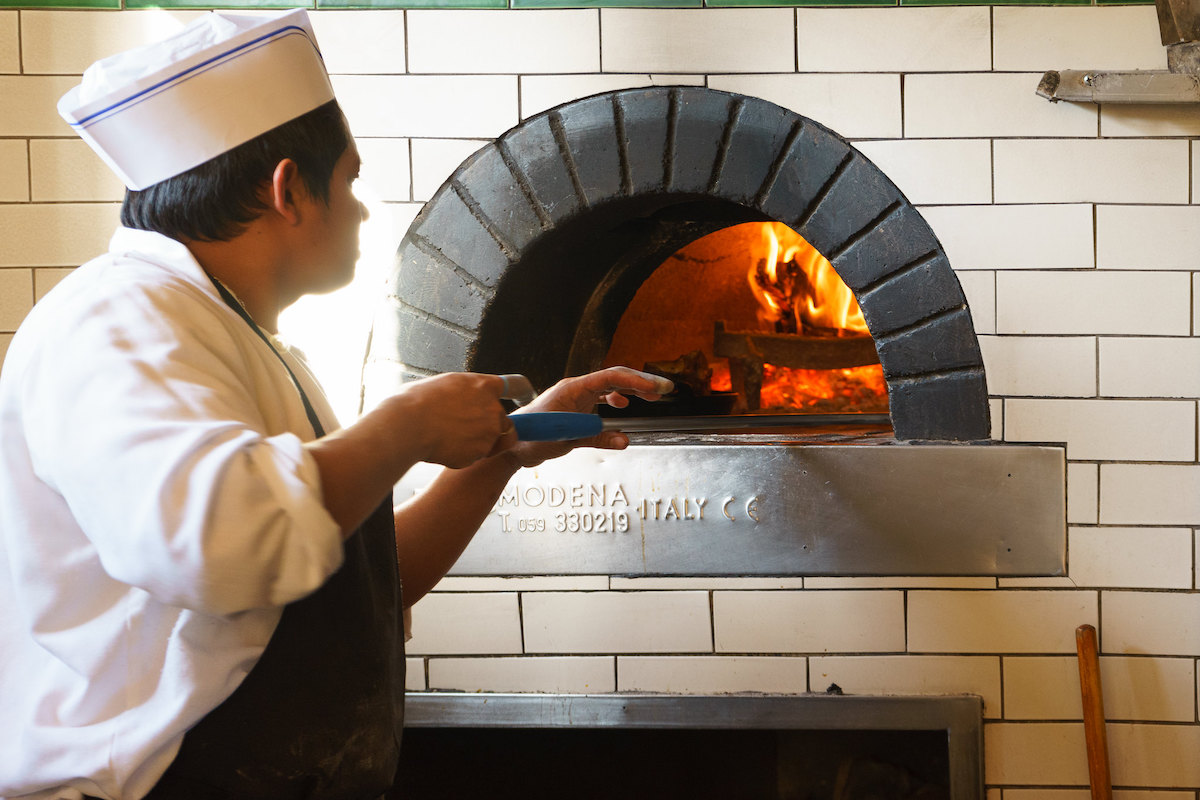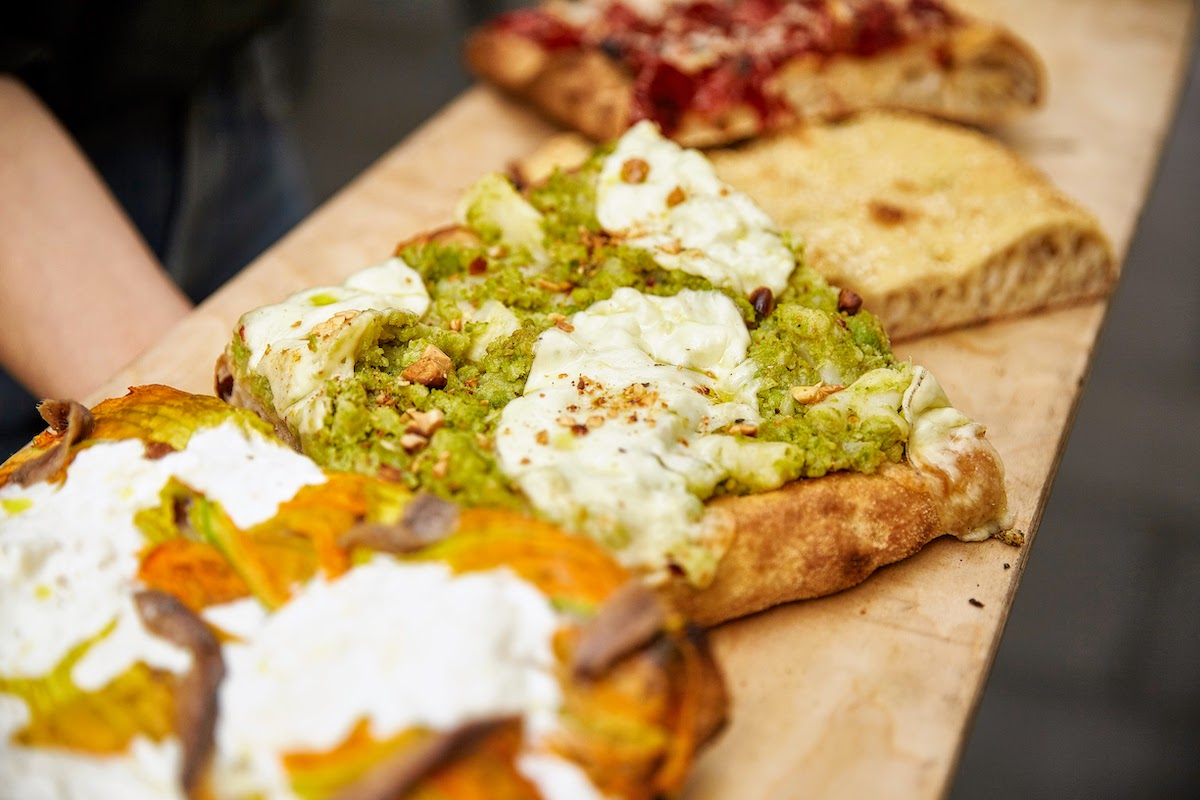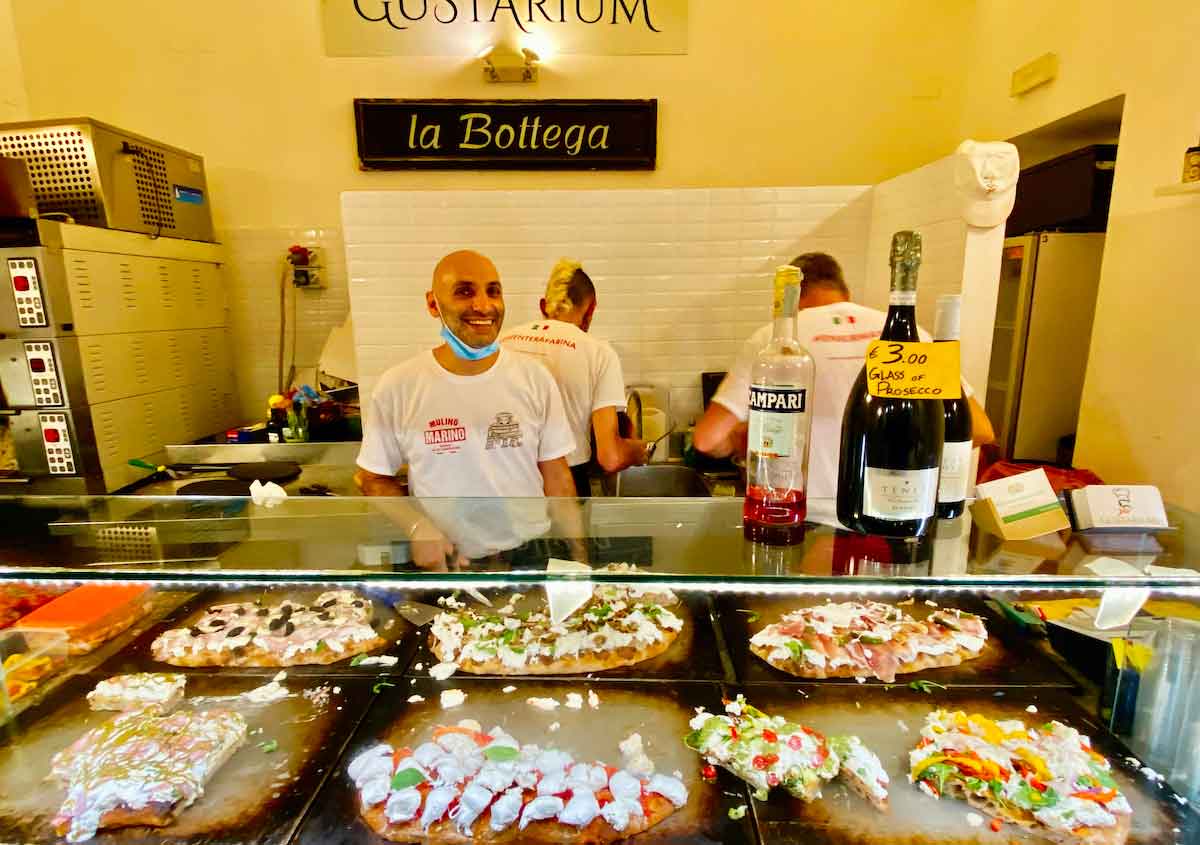What's Included
Pizza is the stuff of legends, literally. Many trace its origins back to Roman times due to an episode in the ancient poem the Aeneid, written by the poet Virgil in the 1st century BC, which seems to describe the dish. It’s certain that people in Italy and indeed the whole of the Mediterranean have been eating flatbread topped with cheese or vegetables for millennia.

A bit(e) of pizza history
In Rome, pizza developed as something baked in commercial bread ovens after the daily bread was finished, just in time to be served for lunch. Originally it was topped with olive oil, or cheese and vegetables, and then from the 18th century onwards with fresh tomatoes or passata (tomato puree).
The latter kind became known as pizze rosse (red pizza) and the former olive oil version christened pizze bianche (white pizza). This distinction continues in Rome up to this day. These original pizzas were quite small, between three and seven inches in diameter. Today, due to their size, they are often called pizzette, meaning little pizzas.
At this time in Rome, pizza would have been considered a piatto povero, a dish of the poor, costing very little and designed to fill up hungry stomachs as quickly as possible.

From poor food to fast food
In the years after World War II, Italy, like the rest of the world, discovered fast food.
The pizza was ripe for development and by the end of the 1960s a new kind of pizza was found all over Rome: the pizza in teglia. This consisted of flatbread cooked in large oblong dishes with all kinds of toppings from the simple to the inspired. It would then be cut into squares and sold by the slice.
This kind of pizza, also inexpensive, found favor almost everywhere, including among tourists, students and families who would buy them as treats for their kids. It soon became Rome’s preferred street food and the number of shops selling it boomed.
Until the 1950s, round pizzas had been associated almost solely with Naples. But in this decade pizzerias started springing up all over Rome and with them came a new kind of pizza, the pizza alla Romana.

A battle between giants
A pizza Napoletana has a crust which is very thin in the middle, but very thick on the outside. The high crust forms a border around the toppings. The pizza is cooked very quickly at a high temperature and so the crust is cooked on the outside but only just on the inside. The result is a soft and fluffy texture. The center of the pizza is so thin that if you cut a slice, it will be all floppy and you will have to fold it to eat it with your hands.
The pizza alla Romana, on the other hand, has a base of the same thickness throughout. There is no real crust and the toppings go right to the edge. The texture of the base is crispy, which is achieved by adding oil to the dough—something which is considered a no-no for a Neapolitan pizza. If you cut a slice it will retain its shape, making it very easy to eat with your hands.

Pizza or pinsa?
In the last fifty years or so, pizza has taken on the status of something of a national dish in Italy, giving it a very important place with Italians and tourists alike. Many Italians will go out for pizza once a week, particularly on Sunday evenings. As everyone, young and old, loves the dish, it’s also something people enjoy with the whole family, from toddlers to seniors.
But the pizza Romana also has its rivals. At the beginning of this century, a “new” pizza stepped onto the scene and started competing for attention.
We’re talking about the pinsa, a variety of pizza made with a mixture of wheat, rice and soy flour and lievito madre (natural yeast similar to sourdough). The pinsa claims to be a modern rediscovery of the original pizza referred to by Virgil and has certainly become very popular in recent years with the number of pinserie growing all over the city.
If you want to try the various different types of pizza on offer here are a few places you can’t miss:
- To try the original pizzette head to the Forno Campo de’ Fiori (Campo de’ Fiori, 22) right in the historic center of the city
- For pizza al teglio Pizzarium is a good bet
- Da Remo (Viale dei Monfortani, 18) in Testaccio is a popular place to get the round pizza Romana
- You can taste excellent pinsa at Pinsa ‘Mpò (Via dei Gracchi, 7)
- Find even more recommendations in our Pizza Lover’s Guide to Rome

What’s next?
Growing awareness of food allergies and illness has lead to the development and popularity of gluten-free pizza in Rome.
My friend Fabio runs Manforte, a popular suburban pizzeria which has two kitchens to properly prepare both the traditional and gluten-free varieties. “Our gluten-free pizzas are very popular both with those who suffer from celiac disease and the health-conscious who want to reduce the amount of gluten in their diets,” Fabio told me.
“This is a trend we are going to see more and more,” he added, so you can bet that gluten-free pizzas aren’t going anywhere soon.
As we have seen, the story of pizza in Rome is one of constant evolution. What’s sure is that whatever comes along next will be as delicious as what’s come before.
Update notice: This article was updated on July 14, 2023.
If you’ve got a major pizza craving right about now, you’re not alone. The best way to solve that problem: joining us on our Testaccio Neighborhood Food & Market Tour! Not only will we try one of the best pizzas in Rome, but you’ll also get your fill of Italian pastries, cheese, deli products, pasta, and more. Needless to say, be sure to come hungry.
And if you’re interested in learning to craft your own pizza, don’t miss our Rome Pizza-Making Class & Dinner in Trastevere. See you there!






Pizza of course :), I love atmospheric areas in Trastevere!!
So true! Trastevere is such a great spot for pizza in Rome!